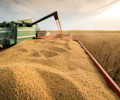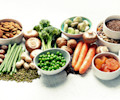The world consumes 200m tonnes of protein a year, the vast majority of which is animal-based proteins. Population growth, rising incomes and urbanisation have driven up global meat consumption by more than 500% between 1992 and 2016 and this trajectory is likely to continue in the future, especially in emerging markets. For example, demand for meat produced in Asia alone is predicted to grow a further 19% in the twelve years to 2025. Animal protein production is dominated by chicken, pork, beef, lamb, dairy and fish, with the global meat, poultry and seafood market estimated to be worth around US$1,270 billion in 2017.
Growth in alternative proteins
Rabobank has suggested that alternative proteins could represent one-third of total EU protein demand growth in the next five years, with a growing number of people describing themselves as flexitarians. Twenty-five percent of US consumers decreased their meat intake from 2014 to 2015, and meat alternative sales grew from $69 million in 2011 to $109 million in 2015. An AT Kearney analysis suggests that in 2040, conventional meat will only make up 40% of global meat supply. The model predicts that plant-based meat replacements will have 25% of total market share, and cultured meat 35%.
Market analysts acknowledge that increasingly, consumers are making the link between food and health, and researchers estimate that demand for meat substitutes – products prepared from tofu, tempeh, textured vegetable protein, seitan, quorn and other plant based sources will grow by 9% annually over 2025-2040. Engaged consumers have easier access to data on the relative merits and environmental footprints of different protein products. Already, nearly half of Americans are reported to consume non-dairy milk, with this trend attributed to concerns over heart health and weight loss. The World Health Organization has also classified red and processed meats as carcinogenic.
Animal protein taxes
Despite significant red flags from the medical profession and scientists as seen previously with regard to the tobacco industry, most governments have, so far at least, refrained from intervening in the market. However, FAIRR has warned investors that the implementation of the Paris Climate Agreement made the introduction of a tax on meat “increasingly probable”. In its report ‘The Livestock Levy’, FAIRR examined the increasing use of taxes by governments on products such as sugar, carbon and tobacco. More than 180 jurisdictions currently tax tobacco, with more than 60 putting a tax on carbon and at least 25 with taxes on sugar. We believe meat may be on the same path that led these goods to become the target of stand-alone taxes. The pathway is driven by a global consensus around meat’s negative contributions to climate change and global health epidemics such as obesity, cancer and antibiotic resistance.
Countries including Denmark and Sweden have already debated a meat tax, with proposals in Denmark suggesting a figure of approximately $2.7 per kilogram of meat. FAIRR has encouraged food companies to use an internal ‘shadow price’ of meat to account for future costs, in the same way many use internal carbon pricing.
FAIRR insights are written by FAIRR team members and occasionally co-authored with guest contributors. The authors write in their individual capacity and do not necessarily represent the FAIRR view.











